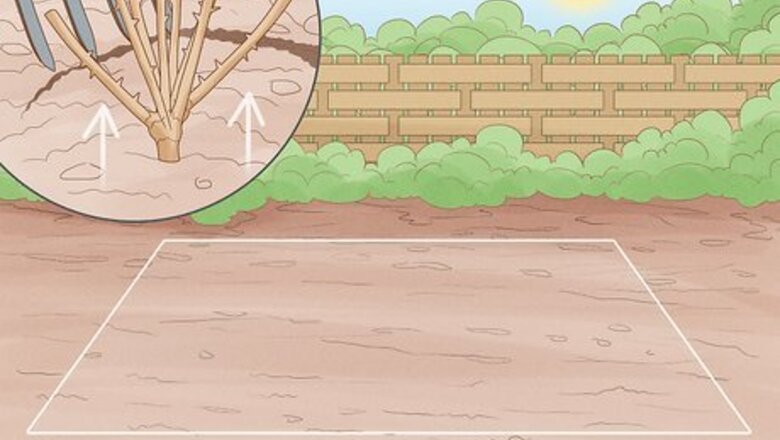
views
X
Expert Source
Tyler RadfordPlant Specialist
Expert Interview. 6 October 2020.
You can transplant a rose bush to a new spot by carefully digging it up and inserting it into a new, weed-free garden patch. To regrow roses, try planting rose stem cuttings and waiting for them to grow new roots.
Replanting a Rose Bush
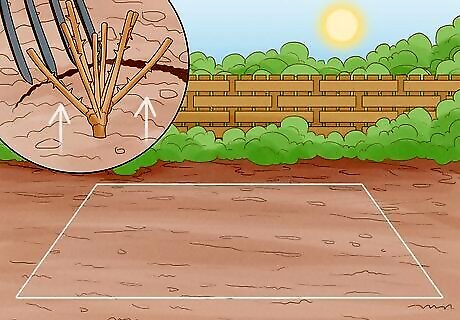
Choose a garden spot that is free of weeds and other plants. Roses thrive when they are separate from other plants. Plant your rose bush in a section of the garden with other roses, or alone. Ideally, choose a spot where the roses can permanently reside so they will not have to be transported later. Use a hand fork to dig up and pull weeds. Opt for a spot that gets full sunlight.
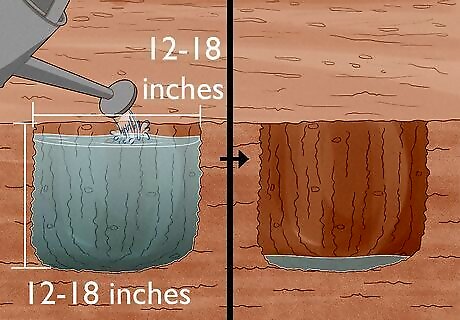
Make sure your soil is well-draining. Roses will grow best in well-draining soil. Before planting your roses, test your soil is by digging a hole that is 12–18 inches (30–46 cm) wide and 12–18 inches (30–46 cm) deep, then fill it with water. Well-draining soil should not take more than an hour to drain. To improve poorly-draining soil, add organic matter like compost to it.
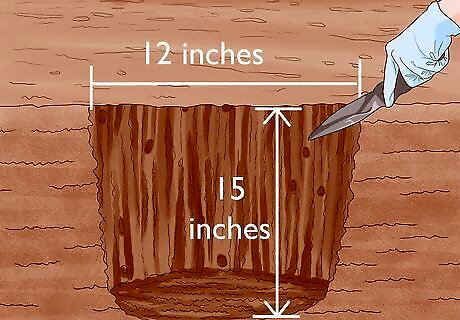
Dig a hole at least 15 inches (38 cm) deep for your rose bush. Use a garden trowel to dig out a new spot for your rose bush. Prepare a hole that is about 15 inches (38 cm) deep. The hole should also be at least 12 inches (30 cm) wide, or large enough to accommodate your rose bush. Wear gardening gloves to protect your hands as you dig.
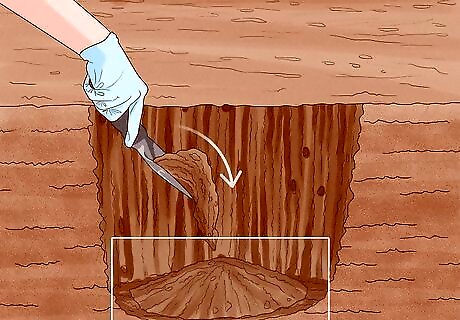
Build a small mound of soil in the center of the hole. Use a garden trowel to pile some of the soil you removed from the hole back into the center of it. Make a small mound that is about 1–2 inches (2.5–5.1 cm) tall for the rose bush to rest on. Gently pat down on the soil to firm the mound.
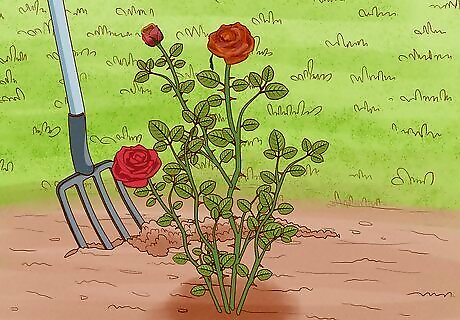
Dig around the bush carefully and remove it from the ground. Use a trowel or small garden shovel to gently remove soil from the perimeter of the rose bush. Dig down to its roots until its root ball is exposed. Continue digging carefully until you can easily insert the shovel underneath the plant to remove it. Be very careful to preserve as much of the root ball as possible when you pick it up. You should be able to lift the plant out of the ground without yanking it. Adjust the size of the hole you dug out as needed after seeing the size of the root ball.
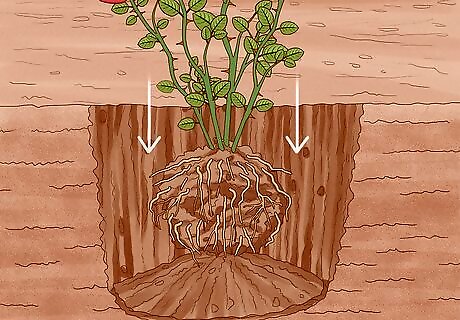
Insert the plant in the new hole and fill it halfway with soil. Gently place the root ball of the rose bush on top of the mound. Gently refill the hole around the plant with the soil you dug up earlier. Stop when it is halfway full.
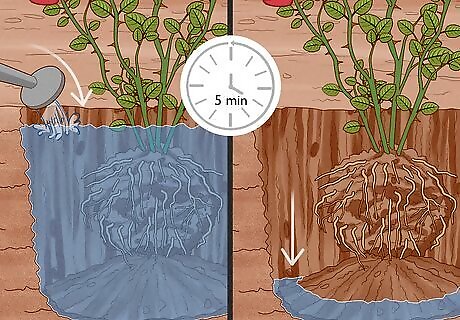
Flood the hole with water. Use a watering can to flood the soil you inserted around the plant. Let it sit for about 5 minutes so that the soil can drain. Allow it to sit for longer if there is still water puddled in the hole after this time.
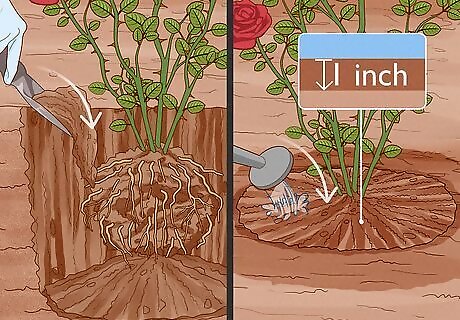
Fill the rest of the hole with soil and water it again. Add more soil to fill up the ring around the plant base. Add about 1 inch (2.5 cm) of water to the top of the soil and allow it to soak in. Give the plant about 1 inch (2.5 cm) of water each week unless it rains heavily. To prevent weeds, apply a layer of mulch to the soil around the plant. Use a fertilizer specifically meant for roses after you replant your rose.
Replanting Rose Cuttings
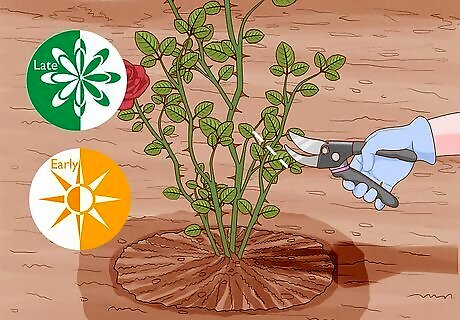
Take cuttings in the late spring or early summer if possible. The ideal time to regrow roses is during warm seasons, before the intense heat sets in. Make cuttings in the late spring or early summer when stems are young but strong. The warmth will promote fast root growth. Cuttings can also be made and replanted in the autumn, but root regrowth will happen slowly and new blooms will only appear the following spring, if successful.
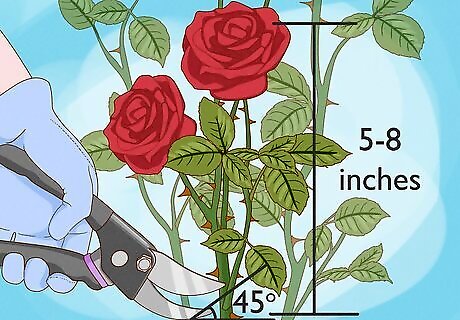
Cut off healthy stems about 5–8 inches (13–20 cm) long. Use sharp pruners to make cuttings to avoid crushing the stems. Aim for cuttings that are between 5–8 inches (13–20 cm) long. Make 45 degree angle cuts. Take cuttings from the top and sides of the plant. Mist the cuttings with water as you replant them to keep them from wilting. The 5–8 inches (13–20 cm) should not include the flower at the top. Sanitize your cutting tools before and after you cut the plant. The cutting needs to be long enough so you have enough hardiness to start your new plant.
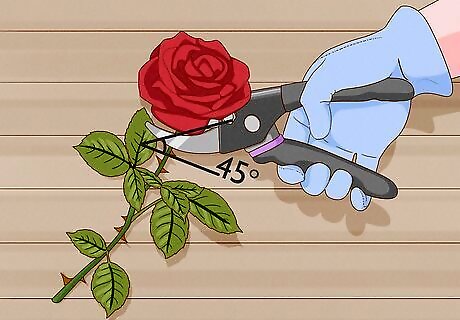
Remove the flower from the stem. Use your pruners to remove the rose bloom from the rest of the stem. This will allow the plant to refocus energy that was directed to the flower to grow new roots. Make this cut at a 45-degree angle.
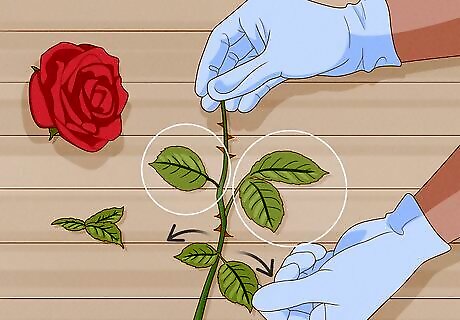
Keep some leaves on the stem when you replant it. Leaves provide sugars from photosynthesis to the rose cutting, which will help it grow new roots. Keep 2-3 leaves on each stem, located high up. Note that some varieties of roses will grow from leafless stems, but the odds of regrowth are better with a few leaves still attached. Leaves can also provide root-promoting hormones to the plant. Keeping more than 2-3 leaves on the stem will pull nutrients away from it, hindering growth. Keep leaves located high on the stem so that they will not be buried under the soil when you replant it.
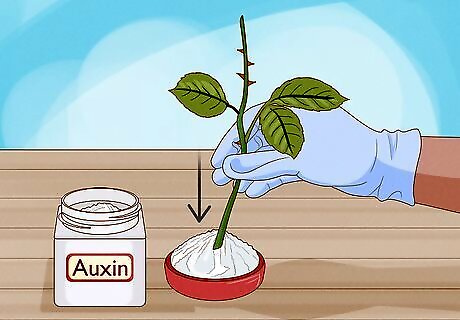
Apply a synthetic hormone to the stem to promote regrowth. Rose cuttings naturally contain a root-promoting hormone called auxin that collects at the bottom of the stems. Some roses may not produce adequate amounts of auxin to spur regrowth from cuttings. To increase the odds of growing new roses, purchase a growing hormone powder that contains synthetic auxin and dip the bottom of your rose cuttings in it before planting. Synthetic auxin can be recognized as either indolebutyric acid (IBA) and/or naphthaleneacetic acid (NAA). Purchase this mix at gardening stores or online.
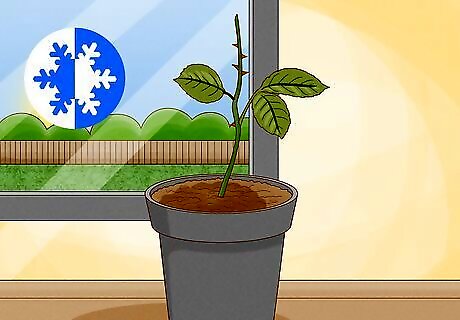
Plant rose cuttings in pots to keep indoors if the weather is cold. If there is a frost, the weather is not warm enough for roots to grow outdoors. Choose to plant your rose cutting in a pot and keep it indoors in cold temperatures. As a general rule, this will occur during the late autumn and winter. Pots can be placed outside in warmer weather or kept indoors.
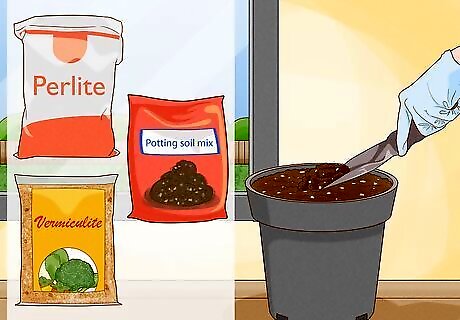
Use perlite, vermiculite, or a light potting mix as a medium in pots. The potting medium you use to grow new roots should contain organic matter, which holds moisture better than ordinary potting soil. Add the medium into a garden pot, filling it 3/4 of the way. Water it until it is moist, but not overly wet or pooling. If you mix more than one medium, use a trowel or small garden rake to mix them. If you plant a rose cutting directly into the ground, till organic matter directly into the top 2–3 inches (5.1–7.6 cm) of the soil to improve its growing potential.
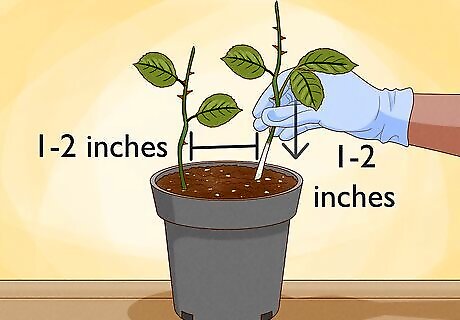
Insert the stems and firm the soil around them. Gently insert the bottoms of the cuttings into the soil mix 1–2 inches (2.5–5.1 cm) deep. Leave about 1–2 inches (2.5–5.1 cm) between cuttings if you plant more than 1 in the same pot. Gently press down on the soil around the stems to ensure that they are supported. If the cuttings meet too much resistance to enter into the soil easily, gently poke into the mix with a pencil or pen first to create openings.
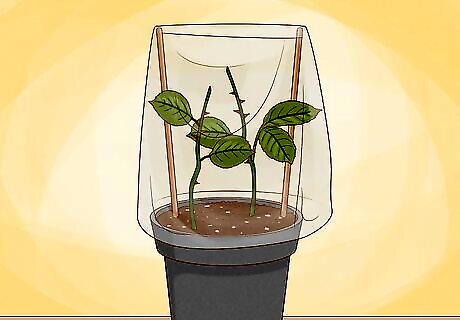
Add some kind of "tent" for a humid greenhouse effect. Roots will grow quickly in a warm, humid environment. Create this kind of greenhouse effect by placing something around the surface of the cuttings, either over the pot or on top of the ground, to trap moisture and heat. Leave it on until new growth appears. You could use: an inverted two-liter soft drink bottle with the top cut off an inverted mason jar a plastic bag held up at the top with a small wooden stake
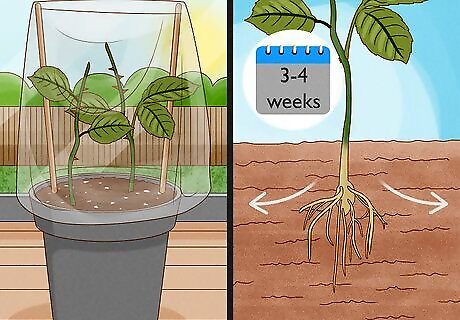
Place the cuttings somewhere with moderate sunlight. Position the cuttings in a place that gets moderate sun and shade. While your rose cuttings will benefit from some sunlight, intense heat and rays may damage them before they take root. Plants can be moved to a sunnier spot once they grow strong roots. It should take about 3-4 weeks for the cuttings to take root. To test if roots have grown, tug gently on the planted cuttings. If they resist being pulled out, roots have likely formed. Potted rose plants can be transplanted into your garden the following season, once they are mature enough to survive replanting.




















Comments
0 comment